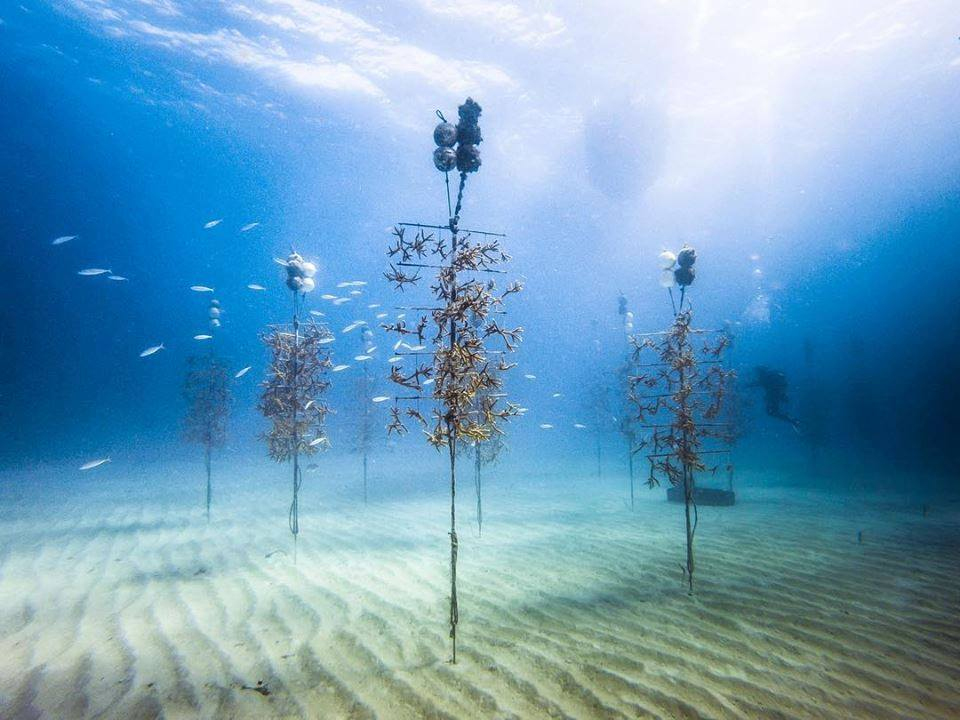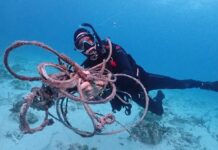A $5 million grant from the National Fish and Wildlife Foundation (NFWF) and NOAA will kickstart massive reef restoration efforts at Eastern Dry Rocks, a reef off Key West and one of seven iconic reefs located within the Florida Keys National Marine Sanctuary.
The money, awarded to the National Marine Sanctuary Foundation, will allow local partners Mote Marine Laboratory & Aquarium and Coral Restoration Foundation (CRF) to work with NOAA’s Office of Habitat Conservation and the Sanctuary to undertake unprecedented ecosystem-scale reef restoration.
“One of the most vital ecosystems in the world are coral reefs, the rainforests of the sea,” said Mote President & CEO Dr. Michael P. Crosby. “Florida’s coral reef not only provides the foundation for immense biodiversity, critical ecosystem services and Mother Nature’s shoreline protection for our communities, but also supports over 70,000 jobs in the Florida Keys.”
He added, “Unfortunately, this vital ecosystem is slipping into functional extinction before our eyes.” This is where the groundbreaking project hopes to create real change for the reef.
Restoration will occur in several stages: professional divers and community stewards will help clear nuisance species and debris to prepare and maintain the restoration site for new corals. More than 60,000 staghorn and elkhorn corals will be outplanted and the partners will monitor the success of the project and the benefits to the coastal ecosystem.
The hope is that the comprehensive project will strengthen coastal resilience, revitalize critical fish and wildlife habitat and engage the community as part of NOAA’s Mission: Iconic Reefs.
The Iconic Reefs initiative plans to restore nearly 3 million square feet (roughly 52 football fields) of the Florida Reef Tract and is one of the largest strategies ever proposed for coral restoration.
When NOAA announced its ambitious restoration plan in December 2019, proposed restoration actions totaled almost $100 million. Sanctuary Superintendent Sarah Fangman said that at the time, no one had yet written a check but that agencies and officials were working to bring resources. With the new grant, concrete funding is in place to kickstart real work to restore the reefs.
“The iconic reefs of the Florida Keys, including Eastern Dry Rocks, are the basis for thriving ecosystems underwater and the critical tourism economy on dry land. But they remain under severe threat,” said Allison Alexander, National Marine Sanctuary Foundation vice president. “This project will transform how we address coral reef degradation and engage communities in stewarding our ocean.”
Each local partner will leverage its expertise to maximize results. Crosby noted that Mote’s role as a core partner in Mission Iconic Reefs is to integrate the significant knowledge and expertise of innovative resilient restoration science with the important assets of its partners. CRF will provide over 35,000 corals for the effort.

“With this funding, as part of the ‘Mission: Iconic Reefs’ initiative, Coral Restoration Foundation will be able to contribute at least 15,000 staghorn and 20,000 elkhorn corals to this collaborative restoration effort at Eastern Dry Rocks off Key West,” said Jessica Levy, CRF restoration program manager. “This will be our biggest restoration push in the Lower Keys, and an incredible boost to the biodiversity of the area.”
In 2019, the Foundation released a study showing that economic activity generated in Florida Keys National Marine Sanctuary is responsible for contributing $4.4 billion and 43,000 jobs across Florida.
Coral reefs are also effective in mitigating coastal hazard risks and increasing coastal resilience. They provide substantial protection against coastal storms and storm surges by reducing wave energy by an average of 97 percent, the National Marine Sanctuaries Foundation found. The structural complexity of coral reefs plays a crucial role in dissipating wave energy and protecting coastlines. With its proximity to Key West, the most populous community in Monroe County, the reef at Eastern Dry Rocks provides a natural defense from coastal storms and storm surges.
“This grant signals a turning point for reef restoration; it is a hugely significant contribution to the ‘Mission: Iconic Reefs’ effort,” said CRF CEO Scott Winters. “We see this as the beginning of an era of focused cooperation around reef restoration. And it is happening not a moment too soon.”



























